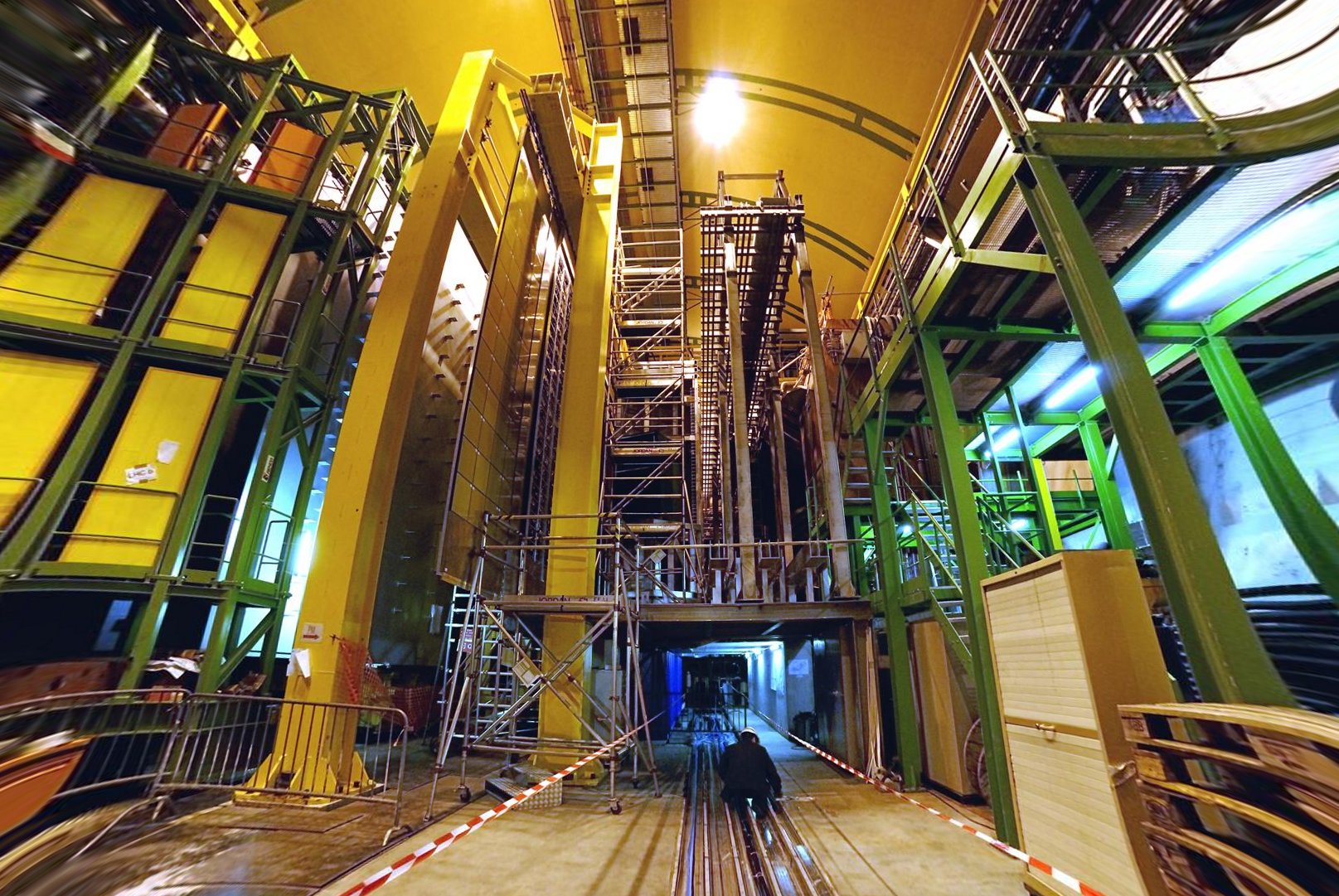Using the LHC in Research
Interview with
Chris - Dr Tara Shears is from the University of Liverpool and she works on the [LHC]b detector. She's looking for antimatter. Tara, thank you for joining us on the Naked Scientists. Tell us a bit about your work.
Tara - My experiment LHCb was designed to look into the question of why, when we think the universe started in equal mixture of matter and antimatter, why there only seems to be one type: matter, around today. We think this inequality arose some time very early in the Universe's history - sometime in the first minute even. We don't know why it should be. We don't know why that happened. We think it's due to some difference in the behaviour of matter and antimatter but we're not quite sure what.
Chris - So what you're saying is there's basically two types of stuff. There's matter and antimatter. This will be like the North and South Pole of a magnet. What we see in the Universe at the moment is all the North Poles, begging the question of, 'Where have all the South Poles gone?'
Tara - That's exactly right. Antimatter's really, in a sense, like the mirror reflection of ordinary matter. We can find out whether it's present anywhere because one particular peculiarity that antimatter has is that whenever it meets normal matter it annihilates. It's quite dramatic. If you have a gram of matter meeting a gram of antimatter you get an explosion equivalent to about 5 kilotons of TNT.
Chris - So you can actually make antimatter?
Tara - You can generate antimatter at CERN in very, very small amounts. What happens at the LHC is that when we have the beam collisions, the proton-proton collisions, as Ben [Allanach]'s already told you we convert the energy of those beams into new particles. Some of those new particles will be antimatter particles.
Chris - So they're made of the same building blocks as matter particles them?
Tara - That's right. To give you an example, for every quark we have an antimatter quark equivalent. For something like the electron there's an antimatter equivalent that we call a positron. Every particle that we know about in the universe also has its antimatter equivalent.
Chris - How can we turn matter into antimatter, though?
Tara - What happens in the LHC is in the collision we either generate matter in the form of matter or antimatter, if that makes sense. It comes in one variety or the other. What we detect in our experiments is maybe the decay products of those particles (they don't live for very long) and what those particles decay to and identifying them we can infer whether we had a fundamental particle in the first place that was matter or antimatter.
Chris - You're starting with a beam of protons. These are matter protons though, aren't they? If you can make antimatter using those does that argue they're made of the same thing as antimatter?
Tara - Not at all because you've got to think that when we have this beam collision we have a certain amount of energy. Whatever collides in those protons (and like Ben said it's like swishing two wet rags together or two squidgy oranges) only part of the proton collides with each other. That converts to pure energy and if we apply Einstein's equation to mass, to particles, antimatter particles have the same mass as normal particles. In that respect these collisions - it doesn't really matter what's colliding together. You have this annihilation of energy and then that energy can be distributed into different particles. It doesn't matter whether it's matter or antimatter.
Chris - And then presumably this will give us insights into the nature of antimatter so we can understand perhaps how they use it.
 |
| A view inside the LHCb cavern © CERN |
Tara - That's what we're hoping with the LHCb experiment. We're hoping to get a better handle on the behaviour of antimatter as opposed to ordinary matter. We think there must have been some difference to give rise to this asymmetry which has allowed our universe to exist in the one state today.
Chris - Where do you think all the antimatter has gone? Is it just all jostled somewhere or is it in some other dimension that we can't see?
Tara - That's the $100,000,000 question, isn't it? I wish I knew the answer to that. We don't know basically. That's why we built the experiment. That's why we're doing our research. We don't know if there's some peculiarity in the behaviour of antimatter which means that it decays more quickly than normal matter. That's why it all seems to die out more quickly in the known universe. There are theories around that I don't even pretend to understand which say we could have antimatter in alternative, parallel universes. That's where it all went and we just happen to be in a parallel universe where there's only matter. There are many hypotheses but little experimental evidence to pin down the explanation.
- Previous Constructing the LHC
- Next Trawling and the Damage Done









Comments
Add a comment